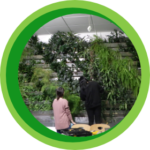Vertical greening
Dress your school in green!

Vertical greening can be applied indoors and outdoors in a space-saving way. Green façades are an alternative form of greening for densely built-up cities. In this case, the plants are attached to the building façade using a wide variety of support materials. In addition to ecological benefits such as improving air quality by filtering dust and pollutants, reducing the heat island effect due to the cooling effect of the plants and noise reduction by minimizing sound, vertical greening also has economic and social benefits.
BENEFITS FOR GREEN COOL SCHOOLS

- Greening ideas for schools, even if space is scarce.
- A first step towards a “Green Cool School” with your self-planted or even homegrown climbing plants.
How climbing plants climb?
How do plants climb vertically? Plants develop different climbing organs to be able to hold on to a façade or climbing aid. In the case of climbing plants, a distinction is made between climbers that need a climbing aid such as a trellis and self-climbers (self-climbing or -clinging plants).
- Trellis climbers: a distinction is made between three different types:
- Twiners (winders, lianas, bines): In this kind of climbing plants, the twiners, the whole stem winds around the climbing aid, for example honeysuckle, climbing cucumber and trumpet vines.
- Tendrillar plants: These are in turn divided into petiole climbers (leaf tendril climbers) and stem tendril climbers. Petiole climbers form leaves with long stems that can hold on to a rope or wire (e.g., clematis), while stem tendril climbers form mobile and touch-sensitive tendrils that hold on to the climbing aids (e.g., grapevine).
- Ramblers (e.g., climbing and rambling roses and blackberries) form their thorns in such a way that they can easily hold on to wires or ropes with them.
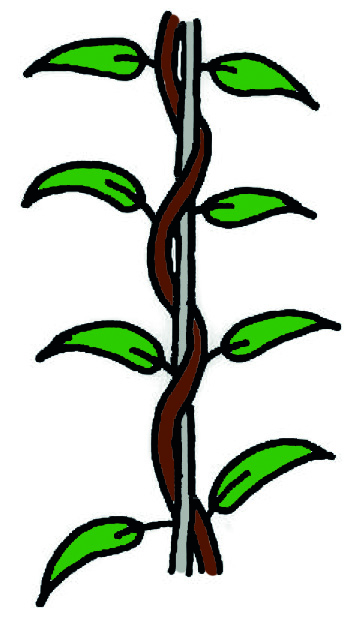
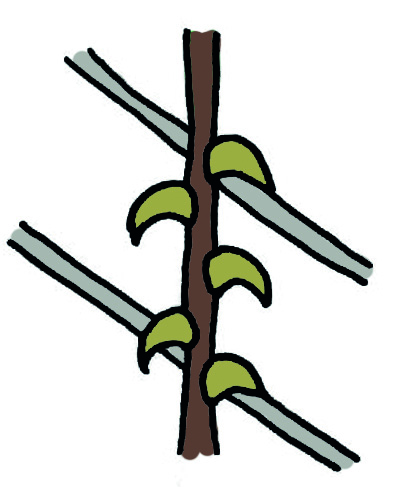
- Self-climbers can cling directly to the wall or façade. A distinction is made between:
- Root climbers form many adhesive small roots (e.g., ivy).
- Disc / Pad climbers hold on to the façade or wall with small pad-shaped anchors (e.g., wild vine).
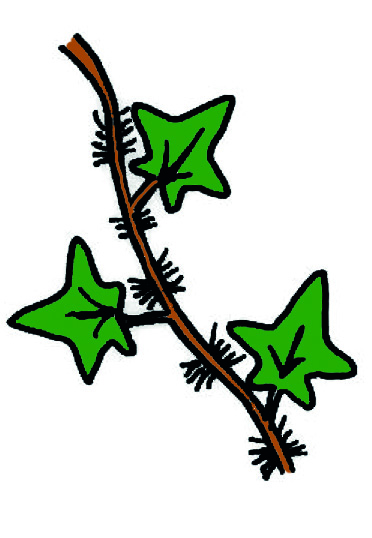
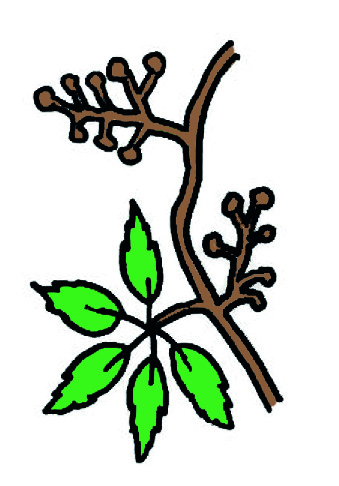
History of façade greening
The first use of plants for greening buildings dates back several millennia. The oldest picture of façades with climbing plants comes from ancient Egypt around 2600 BC. The ancient Romans and Greeks also liked to make use of climbing plants and used them to plant pergolas. In the 17th and 18th centuries, many new species were introduced from North America (e.g., the trumpet flower), followed in the 19th century by the import of climbing plants from East Asia (e.g., the creeping knotweed). This species-rich plant selection led to a veritable climbing plant boom in Europe.

DID YOU KNOW?

Which animals do green façades provide a habitat for?
Green façades provide a new habitat for urban fauna, especially for insects such as butterflies, bees, and bumblebees. Also, some bird species find a retreat and habitat in such greenery and use it as a water and food source, they peck the fruits of climbing plants or hunt insects.
Variants of façade greening
In principle, a distinction is made between two types of façade greening: soil-bound and wall-bound façade greening. In contrast to the soil-bound variant, the connection of wall-bound greenery to the natural soil is not necessary.
- Soil-bound façade greening: This includes all greening that is rooted in the natural soil. Climbing plants are used for this purpose. Self-climbing plants that cling directly to the wall or scaffold climbers with climbing aids (such as climbing frames, ropes, etc.) can be used.
- Wall-mounted green façades do not require a soil connection. Variants include the use of 5 – 10 cm thick plant mats or plant trays that are filled with substrate and placed horizontally on top of each other on the wall. The choice of plants for wall-mounted green façades is very diverse. Everything from succulents to grasses, herbs and perennials to woody plants can be used, considering the requirements of the location.

TIP

Discuss with the pupils where they have seen vertical and façade greening. What types of greenery did they see? Where could additional vertical greenery be created? What possibilities are there at and in the school?
Advantages of green façades
The foliage of the plants filters pollutants from the air, precipitation is retained and can evaporate, thus cooling the ambient temperature. In addition, the foliage creates an air cushion that protects the building from overheating in summer and from extreme cold in winter (with evergreen climbing plants). Numerous studies have shown that the cooling and insulating effect of green façades in the winter and summer months contributes to a significant reduction in heating and air conditioning costs. In addition, faunas benefit from the planted walls. Birds and insects find shelter and food in them. The aesthetic aspect should not be neglected, however, because plants are a natural design tool that have a positive influence on our well-being.
OPPORTUNITIES TO DEEPEN THE TOPIC ACROSS DISCIPLINES

As an interdisciplinary consolidation you can work on the following questions with the pupils:
What are the advantages of green façades?
- Research in small groups under the aspects: Temperature (building and environment), air quality, biodiversity, design. You can find some valuable links in the section: further information.
Which animals use green façades as a habitat?
The history of façade greening can be integrated into history lessons.
In art education you can talk about the artist Patrick Blanc.
- Look at some of his works together and discuss them with the class.
- Design a vertical planting wall yourself. Jointly choose a wall of the school building or in the surrounding area and take a photo of it. Have the students draw designs for it and choose suitable plants together.
- Create artistic versus scientific drawings of climbing plants. Details of plants can also be chosen for this, and the plant parts labelled.
Experiments
Experiment: Climbing plants@school
Climbing plants at school With the help of this exercise, the pupils can observe and learn about plant growth and the climbing organs of climbing plants at close quarters. For this purpose, they also grow their own climbing plants. LEARNING…
